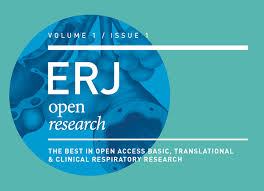CDC shifts COVID-19 vaccination to individual decision-making, separates chickenpox shot for toddlers

Editor's Note The Centers for Disease Control and Prevention (CDC) has updated its immunization schedules to emphasize individual-based decision-making for COVID-19 vaccination and to recommend that toddlers receive a standalone varicella (chickenpox) vaccine rather than the combined measles, mumps, rubella, and varicella (MMRV) shot, a CDC October 6 release reports.…
CDC projects hospitalization burden for 2025–2026 respiratory season

Editor's Note The Centers for Disease Control and Prevention (CDC) expects that COVID-19, influenza, and RSV will together drive a similar level of peak hospitalizations this fall and winter compared to last season, according to a CDC August 25 outlook. The assessment, updated every 2 months, provides a baseline for…
Socioeconomic deprivation linked to lower fitness before surgery, UK study finds

Editor's Note Patients from socioeconomically deprived areas are more likely to have reduced cardiorespiratory fitness before surgery, potentially contributing to poorer surgical outcomes, MedicalXpress August 12 reports from a study published by PLOS One. The research, led by PhD student Donna Shrestha of Lancaster University Medical School, analyzed preoperative fitness…
Study: Night shifts increase asthma risk for women

Editor's Note Women who work night shifts are around 50% more likely to have moderate or severe asthma compared to women who work only during the day, according to findings published in ERJ Open Research. As detailed in a June 15 announcement from the European Respiratory Society, the study analyzed…
Study: Language barriers raise sepsis death risk despite faster treatment

Editor's Note Patients hospitalized with sepsis who have limited English proficiency (LEP) face significantly higher odds of dying in the hospital even after accounting for multiple demographic and clinical factors, according to research presented at the American Thoracic Society International Conference by researchers from UC San Diego. Healio reported the…
Lung transplant waitlist deaths drop under new composite allocation system

Editor's Note Implementation of the Composite Allocation Score (CAS) in lung transplantation significantly reduced the proportion of patients who died or were removed from the waitlist, including those with the most urgent medical need, according to a June 17 article in Healio. The findings were presented at the American Thoracic…
Study: Pneumonia risk lower for COVID-19 than influenza, RSV

Editor's Note Influenza and RSV infections more than double the risk of secondary Streptococcus pneumoniae infection, while COVID-19 is associated with a significantly reduced risk, according to a June 2 news brief from the Center for Infectious Disease Research and Policy (CIDRAP). The findings stem from a retrospective study of…
Study: Longer shifts, understaffing increase nurse sickness absence

Editor's Note Hospital units with more RNs and fewer long shifts experience significantly lower rates of staff sickness absence, while understaffing and long shifts drive nurse illness, according research published April 22 in JAMA Network. The retrospective longitudinal case-control study involved 18,674 RNs and nursing support (NS) staff across 116…
Pulse oximetry monitoring at home found to save lives of high-risk opioid surgery patients

Editor's Note Intermountain Health researchers have uncovered a practical solution for reducing the risk of opioid-induced respiratory depression (OIRD) in same-day surgery patients, showing that a basic monitoring device—specifically, a pulse oximeter—can save lives, News Channel Nebraska March 27 reports. The study, published in the Respiratory Care Journal, focused on…
Study: BMI, hidden tumors complicate intubation

Editor's Note Subtle risk factors—such as low BMI and hidden tumors—could lead to unexpected airway management difficulties, according to research published on March 17 in Nature: Scientific Reports. The case-control study analyzed 672 surgical patients who required endotracheal intubation between 2015 and 2020. Researchers compared 168 patients who experienced difficult…

 Free Daily News
Free Daily News